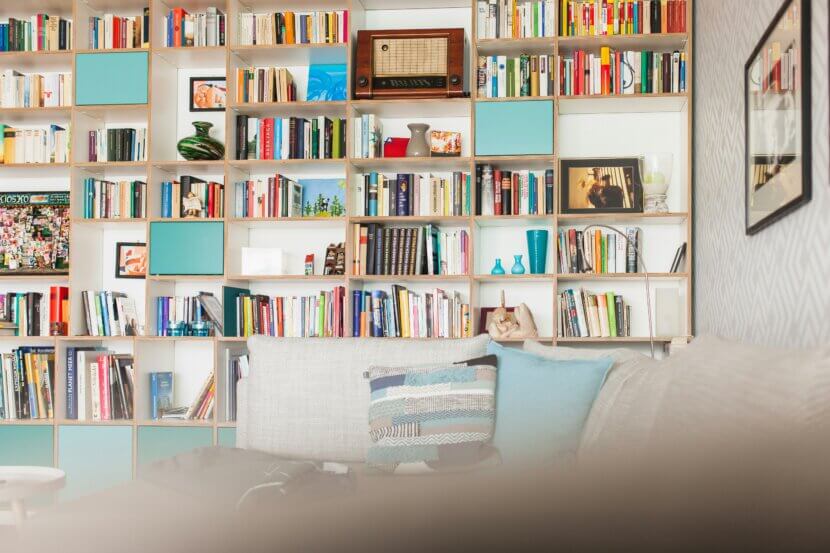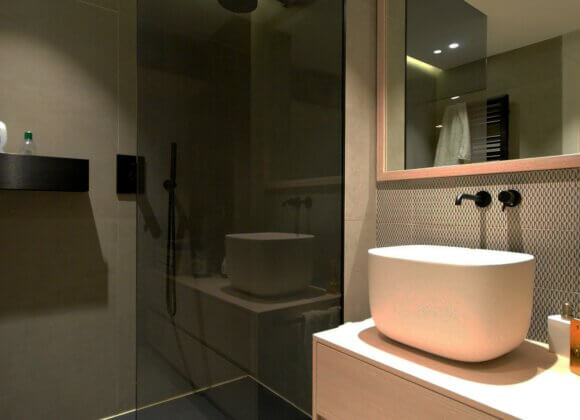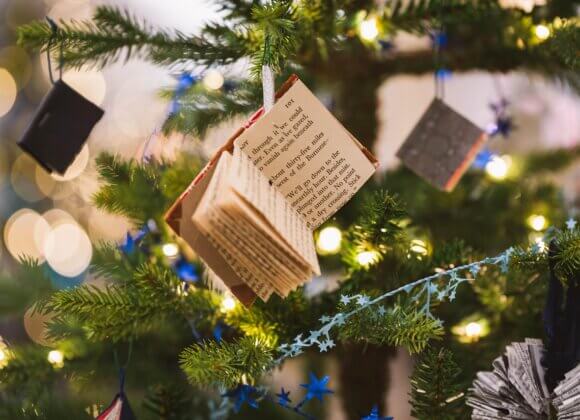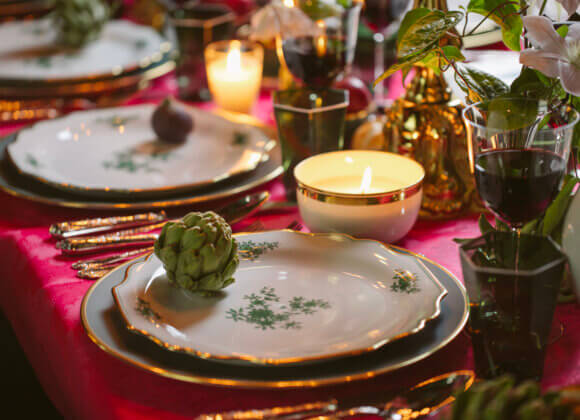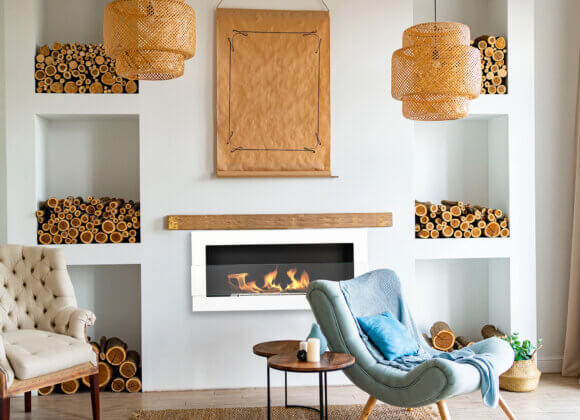The great thing about bookshops is that you can usually find what you’re looking for quickly. At home, it’s often a different story – especially if the last book you read has been stuffed somewhere in between in a hurry. A bookshelf should be a stage for your favorite titles: an expression of your personality and a decorative element that characterizes your living space. But how do you arrange a bookshelf so that it is both practical and stylish? With well thought-out planning and a few clever tricks, you can transform your shelf into a real eye-catcher – and keep everything organized at the same time.
Plan your bookshelf
Moving house makes things easier – because here you have to think about how you want to design your bookshelf anyway. What function should the shelf fulfill? Should it only be used for storage or should it also be aesthetically pleasing? Should it only contain books or also decorative elements?
Calculate space requirements
The size of the shelf depends on your book collection. As a rule of thumb, a bookshelf should have about twenty percent free space to leave room for new additions. Roughly count how many books you have and consider which formats need to be accommodated. Large illustrated books or atlases need higher shelves, while paperbacks can be placed on narrower shelves. A shelf with adjustable shelves creates additional flexibility.
Choose a location for your bookshelf
Think about where the bookshelf should be placed. Books are sensitive to direct sunlight and high humidity. A place away from windows and radiators is ideal. If you have a lot of heavy books, check whether the floor can support the weight – especially in old buildings.
Sort out – less is more
A cluttered bookshelf quickly looks chaotic. Take the opportunity to go through your collection thoroughly and ask yourself a few questions:
- Have I even read this book?
- Do I want to keep it?
- Will I still be interested in the future?
- Does it have an emotional or decorative value?
You can give away, donate or sell books that you no longer need. This creates space for your favorites and gives your bookshelf a clearer structure.
Organization systems: Practical and beautiful
The choice of organizing system depends on your preferences. Here are some tried and tested methods:
- Alphabetical: Classic and particularly suitable for larger collections or specialist books. Practical, but often visually inconsistent.
- By genre: Ideal for separating novels, non-fiction or biographies. Provides an overview and thematic classification.
- By size: Perfect for design lovers! Books are sorted by height to create a uniform overall look.
- Chronological: Useful for collections by an author or specific series to make the development of a work comprehensible.
Tip: Combine different approaches, for example size sorting with thematic clusters or color accents.
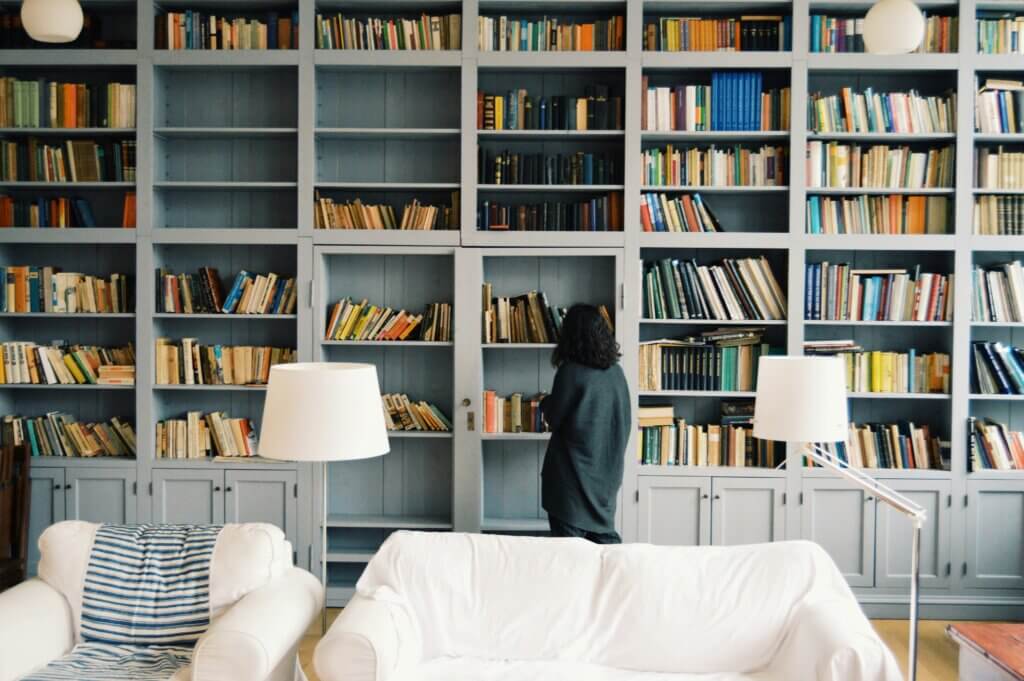
Problem areas: Dictionary, travel guide & Co.
Difficult items such as dictionaries, foreign language dictionaries or travel guides are often visually unappealing. Solutions:
- Dictionaries: Store in closed shelves or lower compartments. Alternatively, plain book covers made of wrapping paper conceal unsightly book spines.
- Travel guides: Store rarely used copies in drawers or decorative boxes. Visually appealing editions can remain on the shelf – preferably next to illustrated books.
- Old books: Protect damaged bindings with protective covers to preserve functionality and overall appearance.
Decoration: setting personal accents
A shelf doesn’t just have to house books. Photos, plants or small sculptures liven up the look. Make sure that decorations do not overlap your books. Open spaces create room for visual calm, and a mixture of horizontally and vertically stacked books creates dynamism.
Stylish bookshelves for every living style
Your bookshelf should fit seamlessly into your interior design concept. Rough wooden shelves on metal structures are suitable for industrial-style homes – they go perfectly with rooms with a rough charm. Combine dark book covers and accessories such as vintage items or metal boxes. Those who love the Scandinavian style should opt for light, bright shelves made of wood or white lacquered material, as they emphasize the clarity of this design. Sort books by size or color and use a few natural decorative elements such as plants or candles. Shelves made of dark wood or with glass doors are suitable for traditional rooms. Books with leather covers, anthologies or encyclopaedias are particularly effective here.
Maintenance and regular updating
A well-maintained bookshelf looks inviting and tidy. Dust the shelves and books regularly and make sure that books are not exposed to direct sunlight. Keep your shelf lively by rearranging it once a year. New books, seasonal decorations or a different arrangement can also bring a breath of fresh air to your bookcase.
Related posts:


